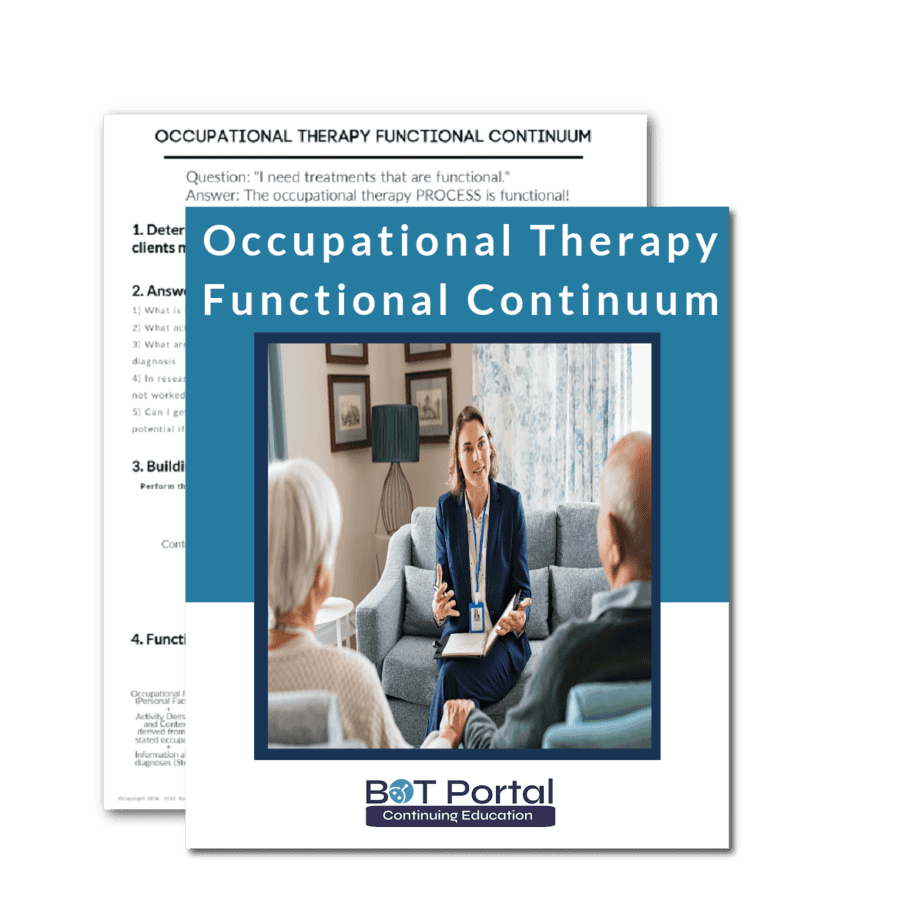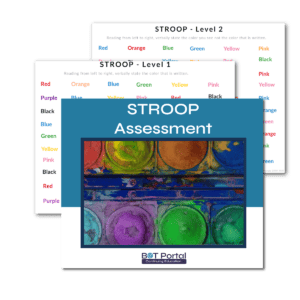Description
Functional Continuum of Occupational Therapy
The Occupational Therapy Process is Functional
The occupational therapy functional continuum is a comprehensive approach used in rehabilitation to help individuals progress from being dependent on assistance to achieving independence in their daily activities. This continuum guides therapists in assessing and addressing the varying levels of function and support that individuals require at different stages of their recovery.
Key Stages of the Functional Continuum
- Dependent: At the initial stage, individuals may be heavily reliant on others for help with daily activities, such as bathing, dressing, and eating. This level of dependency is common immediately after a significant injury, surgery, or illness. Occupational therapists assess the person’s abilities and provide maximum assistance, ensuring that basic needs are met while also beginning gentle therapeutic interventions.
- Assisted: As individuals start to recover, they move to the assisted stage, where they still need help but can participate in activities to some extent. Therapists focus on strengthening and improving skills through targeted exercises and activities. For instance, a person might need help to stand up but can begin to walk short distances with support. The goal is to increase participation and reduce the level of assistance required over time.
- Supervised: In this stage, individuals can perform most activities independently but still require supervision to ensure safety and proper technique. For example, someone recovering from a stroke might be able to prepare a simple meal but needs supervision to prevent accidents. Occupational therapists provide guidance, encourage practice, and make adjustments to the environment to enhance safety and efficiency.
- Independent with Equipment: Here, individuals can perform tasks on their own but may need adaptive equipment or modifications to their environment. This could include using a walker for mobility, a reacher to grab items, or grab bars in the bathroom for stability. Therapists teach clients how to use these tools effectively, promoting greater independence and confidence.
- Independent: At the final stage, individuals can carry out their daily activities without any assistance or supervision. They have regained the necessary strength, coordination, and confidence to manage tasks on their own. Therapists continue to monitor progress, provide advanced strategies for maintaining independence, and address any remaining challenges.
Importance in Rehabilitation
The OT functional continuum is crucial because it provides a structured pathway for recovery. It helps therapists set realistic goals, track progress, and adjust treatment plans based on the individual’s evolving needs. By gradually reducing the level of assistance and introducing adaptive strategies, therapists empower individuals to regain control over their lives and achieve their highest possible level of independence.
The occupational therapy functional continuum is a dynamic framework that supports individuals through various stages of recovery. By focusing on gradual improvement and tailored interventions, occupational therapists help people regain independence, enhance their quality of life, and confidently return to their daily activities.




